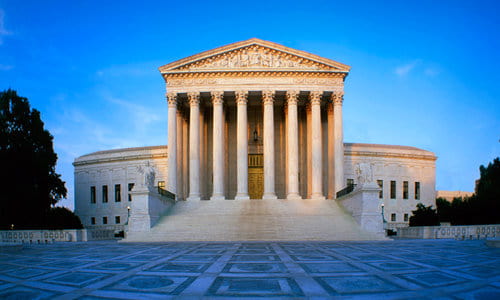What The Supreme Court’s New Second Amendment Ruling Really Means
 By
By
This past week, the U.S. Supreme Court issued not
one, but two momentous if not earth-shattering decisions. While one of them
rescinded the 1973 decision on Roe
vs.Wade calling it unconstitutional at is base, the other
addressed an issue that is entirely rooted in the constitution. That is, the
Second Amendment which allows U.S. citizens the right to bear arms. The decision targets the many mandates and
conditions for obtaining a handgun in New York State in particular, referring to
them as “unconstitutional.” However, the ruling does not deal with handgun
safety such as trigger locks, gun safes, and even gun
concealment furniture. It merely deals with the constitutional
law established by the founding fathers of America.
According to a new report, as shocking as it was to
some New York State lawmakers and manyfederal legislators, the Supreme
Court’s Second Amendment ruling was limited in scope.
That is, it struck down requirements adopted in at least six Democratic-led
states that “curbed who may obtain a license to carry a handgun in public.” However, contained within the 63-page majority opinion
penned by Associate Justice Clarence Thomas, is an important shift in the
manner in which federal courts will review firearm laws. Experts say the changes
will likely prompt challenges to other restrictions that Congress has included
in their newly passed bipartisan gun safety package such as so-called “red flag”
laws which at base, are unconstitutional. The SCOTUS’s 6-3 majority ruling utilized a
challenge to New York State’s gun licensing requirements that reject a legal
standard lower courts use to make an assessment on gun restrictions evident in
the Second Amendment. Rather than embrace that standard, Judge Thomas stated
that to “pass constitutional muster” gun regulations must remain “consistent
with this nation’s tradition of firearm regulation.” Law experts are already agreeing that the law will
likely leave dozens of gun regulations vulnerable to legal challenges if they
do not adhere to the laws and/or practices set in place when the Second
Amendment was first drafted and adopted back in 1791and also when the
Fourteenth Amendment went into law in 1868. Again, these will almost surely include the red flag
laws which permits lower courts to deny and/or remove firearms from anyone they
see as a threat. Something that did not exist in 1791. Says UCLA School of Law Professor and Second
Amendment expert, Adam Winkler, “Thomas says only gun regulations consistent
with historical regulation of guns are permissible. Red flag laws, however, are
a modern invention.” The professor adds that bans due to domestic abuse are
newly invented also. Those represent just two of the policies that are
said to be included in the new gun legislation approved by the Senate and
signed by the President. The new legislation was drafted in response to a rash
of mass shootings that have occurred under President Biden’s watch, such as
those in New York, Buffalo, and Uvalde, Texas. The legislation provides for
funding that will encourage states to adopt new red flag laws. The laws would prevent partners in a recent or
current relationship from purchasing handguns if they’ve been convicted of
domestic violence, for instance. But some worry that it would also potentially prevent
an individual from purchasing a handgun if his or her politics do not line up
with either the state and/or the judge presiding over the court. The main issue Clarence confronted is a century-old
New York State law that requires residents to show proof of “proper cause” to
carry a handgun. That is, for self-protection that’s greater than most people
can demonstrate. For instance, people who carry significant amount of cash for
their work or well-known figures might meet this threshold. Two residents of Upstate New York, who joined with
the New York State Rifle and Pistol Association, initiated a lawsuit when a
county licensing official made the decision that they didn’t demonstrate “extra
need” and therefore were denied the carry privileges they were seeking. With the requirement struck down, the Supreme Court
has paved the way for what will likely be immediate challenges to very similar
gun restriction laws in New Jersey, California, Maryland, Hawaii, and
Massachusetts. But 43 states possess “shall issues” rules which automatically
presume residents are legally entitled to carry a gun so long as they meet the legal
requirements established by the states, such as clearing the background checks
and completing a training course for firearms. The SCOTUS’s outcome regarding the Second Amendment should
not have come as a surprise given the more conservative justices reposes to
oral arguments last November of 2021. Back in 2008 and 2010 a divided Supreme
Court struck down a ban on handguns in Washington D.C. and Chicago that ruled
U.S. citizens have an individual right to own a handgun in their own home. In the wake of those decisions, the sale of illegal
firearms have spiked in both cities. Chicago currently is one of the most
dangerous cities in the country, with dozens of shootings per week. Washington
D.C. also suffers from high crime rates.






